
CBT ARRAY 20 ELEMENTS
Designer:
James Morton
Project Category:
Tower Speakers
Project Level:
Intermediate
Project Time:
20+ Hours
Project Cost:
$100 – $500
Project Description:
CBT ARRAY 20 ELEMENTS
Design Goals:
CREATE THE BEST NEAR FIELD SOUND EXPERENICE POSSIBLE. 10 OHM Zin, 150 watts RMS.
Driver Selection:
ND64-16
Enclosure Design:
BALTIC BIRCH PLYWOOD
Enclosure Assembly:
WOOD GLUE
Crossover Design:
NONE
Tips & Tricks:
FILE OFF ROUGH SPOTS ON DRIVER TERMINALS. A LITTLE RTV AT TERMINALS FOR GOOD AIR SEAL
Conclusion:
YEP, AWESOME SOUND
About the Designer:
HARDWARE DESIGN ENGINEER RETIRED, CPU BOARD DESIGNER. SEE PROFILE.
Project Parts List:
|
Part # |
Description |
Qty |
|
295-519 |
Dayton Audio ND64-16 2-1/2″ Aluminum Magnesium Cone Full-Range Neo Driver 16 Ohm |
40 |
|
081-430 |
Parts Express #8 x 1-1/2″ Deep Thread Pan Head Screws Black 100 Pcs. |
80 |

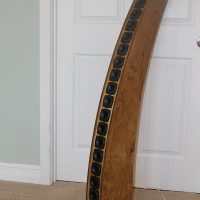
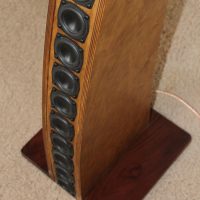

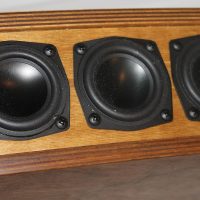
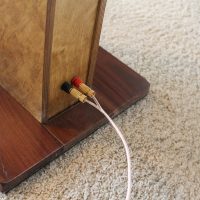
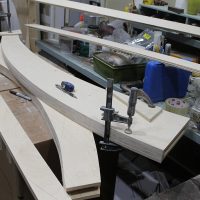
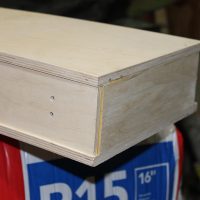
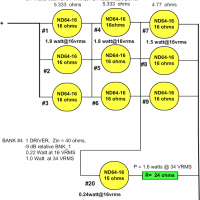
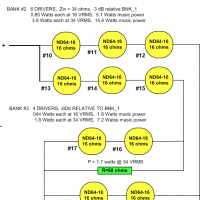
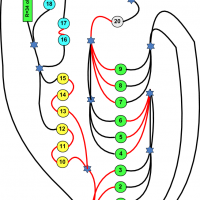
It would be helpful to include a baffle layout with numerical sequence to match the wiring schematic.
Yes I was very concerned, about the side panels. Their are seven internal baffles the top is 1.5″ X 3.0″, the seventh is 7.0″ X 3.0″ at the bottom., equally spaced forming a 30 deg angle tangent to
the arc. a fairly random array of angled surfaces making a very stiff structure. Stuffed with rock wool.. Allah tech ingredients a thin layer of cheap acrylic latex caulking would be just the thing
complement the stiff birch plywood. The bottom stand is 12.0″ X 12.0″ walnut laminated to a
1/4th steel plate. I am now using my 40 year old JBL 10LE speakers as a sub woofer. Next
up is a DML center channel. Listening just causes a sigh of pleasure. Like being at a live
performance. I made a sub woofer amp using the PE TDA7293 and two 24VDC Meanwells,
I actually had to attenuate the bass boost. Let me know if you want more details. Hind sight
makes the build so much quicker..
This is a most impressive project. I have been interested in a CBT design that would use a better quality driver than the CBT36. There was another similar project 3-5 years ago. Is there a “builder’s package” of information available, or is it limited to the wiring diagram and brief description of the cabinet?
Study the schematic details, Ohms law will give you the power to design any array you wish (Zin, #drivers, & power shading), Study the Vas, Fs, and Max displacement, also the frequency response, This design is weak on the low
end, which is OK if you have subwoofers and/or equalization. A custom analog low pass filter and power amp would be a very low cost way to flatten the frequency response curve for a purist. PE has many dirt cheap kits that will make
it very low cost to put together your own full custom dream.
Hi James! I bought a kit such as this and I would like to add a center speaker using the same drivers as the ones used in the kit. How would you go about doing such a project. It wouldn’t need to be curved… Thanks!!
A DML would be ideal. otherwise a small shallow tuned seal box with the array on the front.
Or mount each driver in a 3 inch PVC tube of correct volume for sealed enclosure, then
attach them to a flat panel.
Just shoot for a combination that gets you less than say 16 ohms DC at the terminals, Basically a midrange design with
a bandwidth of 250 to 2.5KHz. difficult to go wrong.. You will want all drivers at equal power. Amazing how most home theater receivers let you tweak the five elements equalization.
Stiff Baltic Birch plywood with a vibration damping elastic layer to Kill the cabinet excitation. I went with a four panel DML sound wall around my PLASMA TV, four, four ohm exciters in series. Need to enter it as a project.